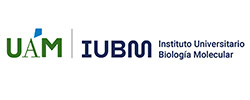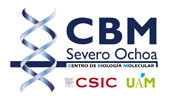Genetics and cell biology of cancer: T-cell lymphoblastic neoplasms
Genome Dinamics and Function
Genoma decoding
Prof. José Fernández Piqueras. Catedrático. Departamento de Biología UAM.
Prof. Javier Santos. Catedrático. Departamento de Biología. UAM.
Prof. María Villa. Profesora Contratada Doctora. Departamento de Biología. UAM.
Prof. Alfonso Blázquez Castro. Profesor Ayudante Doctor. Departamento de Biología. UAM.
T-cell lymphoblastic leukaemia/lymphoma (T-LBL and T-ALL) are haematological diseases with an urgent need for reliable prognostic biomarkers that allow therapeutic stratification and dose adjustment. Therefore, the major aim of our work is to decipher new molecular biomarkers and to propose more effective and less toxic treatments. To this end, we integrate data from genomics, transcriptomics and proteomic approaches as a start point to identify new driver-molecular mechanisms. During the 2021-2022 period In the last year we have continued with the identification of new mutations and changes in gene expression that have allowed us to propose new therapy strategies. In this sense, we have evidenced that the efficacy of γ-secretase inhibitors depends on the gene dosage of the MYC gene. We have also performed a proteomic analysis that reveals new non-apoptotic functions of FADD protein in these neoplasms. In order to improve our understanding on the efficacy of radiation , we have demonstrated the advantages of combined radiation regimens in controlling tumorigenesis that allow better control of healthy tissue homeostasis and facilitate tumour cell death. In addition, we are currently interested in evaluating the dysregulation of circular RNAs and long and short ncRNAs, to achieve a comprehensive view of the complex regulatory lncRNA/circRNA-miRNA-mRNA axes dysregulated in T-cell lymphoblastic neoplasms in the context of a personalized precision medicine. To this end, we have investigated the differential expression patterns of circRNAs in different development stages of human thymocytes to perform predictions in silico regarding the ability of specific circRNAs when controlling t in theexpression of genes involved in thymocyte differentiation. Our study provides, for the first time, significant insights into the usefulness of circRNAs in discriminating between different stages of thymocyte differentiation and provides new potential circRNA-miRNA-mRNA networks capable of controlling the expression of genes involved in T-cell differentiation in the thymus. Regarding the analysis of lncRNAs, we have reported a new easy-to-use method, by coupling the specificity of a peptide nucleic acid (PNA)-labelled probe with flow cytometry (RNA-Flow FISH method that allows a reliable quantification of long lncRNAs, in particular those related to telomeres (TERRA and TERC) in cell lines and blood, with broad applications in basic research and clinical diagnostics.


